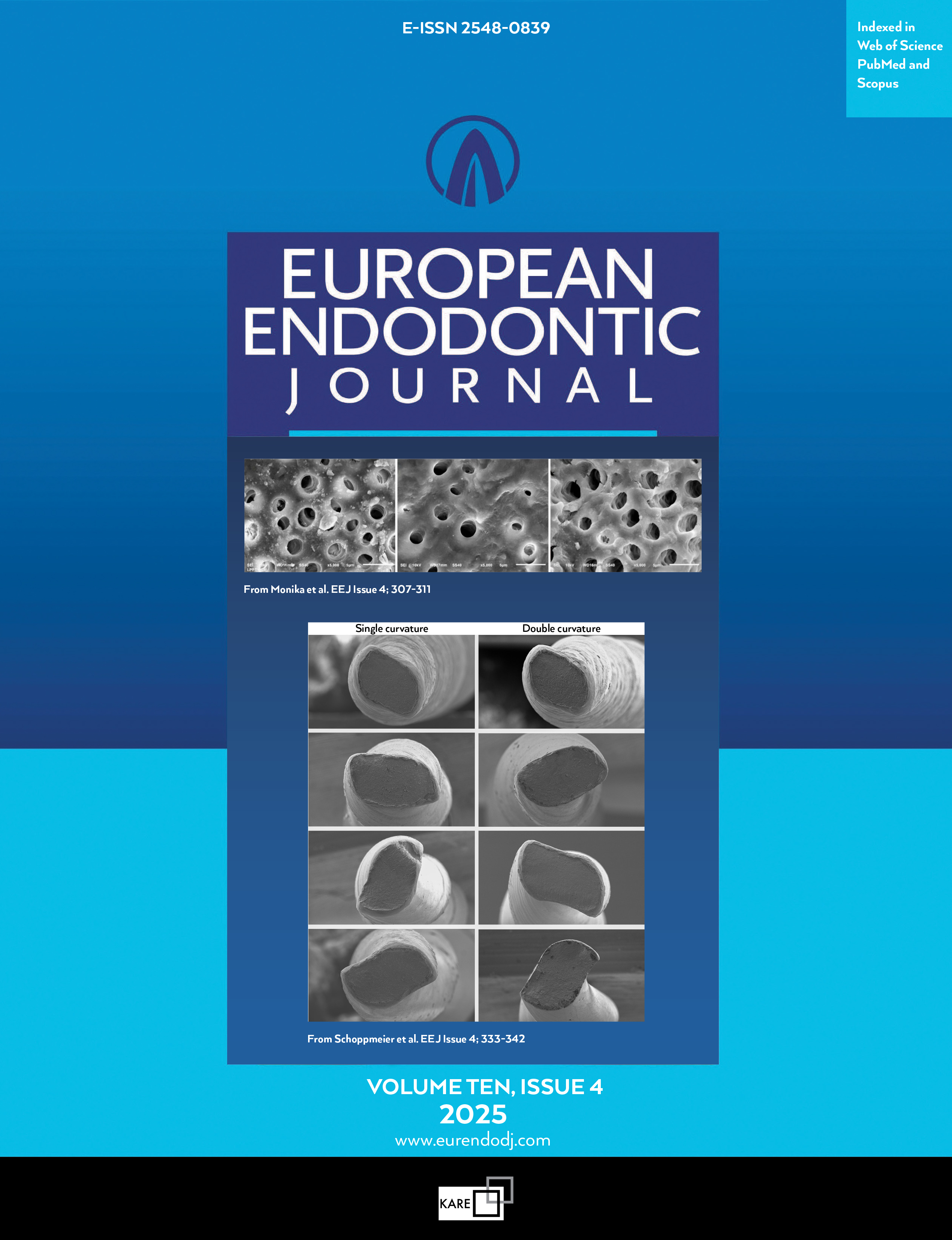Metrics
2024 IMPACT FACTOR
5 year Impact Factor
Eigenfactor Score
2024 CiteScore
Journal Citation Reports
(Clarivate 2025, JIF Rank)
In Vitro Evaluation of Bovine Pulp Dissolution Using Dual Rinse HEDP at Different Temperatures
Dina Abdellatif1, Gianluca Plotino2, Edouard Euvrard1, Davide Mancino3, Alfredo Iandolo11Department of Maxillo-facial Surgery and Stomatology, CHU Besançon, Besançon, France; Sinergies Laboratory EA 4662, University of Franche-Comté, Besançon, France2Private Practice, Rome, Italy
3Faculty of Dental Surgery, Federation of Medicine Translational of Strasbourg and Federation of Materials and Nanoscience of Alsace, University of Strasbourg, France
Objective: To evaluate the degree of pulp tissue dissolution using a novel irrigant, Dual Rinse HEDP, at different temperatures.
Methods: Fifty standardized pulp tissue samples (1×1×1 mm) were divided into five groups (n=10): Group A, 0.1 mL of NaOCl (5.25%) at 36.8°C (body temperature); Group B, 0.1 mL of NaOCl (5.25%) at 80°C; Group C: 0.1 mL of NaOCl (5.25%) mixed with Dual Rinse HEDP at 36.8°C; Group D, 0.1 mL of NaOCl (5.25%) mixed with Dual Rinse HEDP at 80°C; Control group: 0.1 mL of saline solution at 36.8°C (n=5) and at 80°C (n=5). The dissolution time of the pulp tissue was recorded in seconds and minutes using a high-resolution digital microscope (20xmagnification) and a stopwatch. Results were statistically analysed using one-way ANOVA and Tukey's HSD post hoc test with significant differences among the groups set at p<0.05.
Results: Statistical analysis indicated that NaOCl at 80°C (Group B: 0.369±0.034 min) and Dual Rinse HEDP at 80°C (Group D: 0.377±0.037 min) demonstrated the fastest dissolution time, without any significant difference between them (p>0.05). Samples treated at body temperature showed significantly longer dissolution times (Group A: 6.252±0.277 min; Group C: 6.389±0.410 min), without any significant difference between them (p>0.05). The control group (Group E) exhibited no pulp dissolution, which significantly differed from all other groups (p<0.05). Heating the irrigants to 80°C resulted in a statistically faster dissolution time compared to the groups tested at body temperature (p<0.05), with no significant differences among the groups tested at the same temperature (p>0.05).
Conclusion: The study highlights the critical role of temperature for the dissolution efficacy of both NaOCl and Dual Rinse HEDP and supports the potential use of Dual Rinse HEDP mixed with NaOCl for continuous chelation. (EEJ-2025-02-016)
Manuscript Language: English
(217 downloaded)


